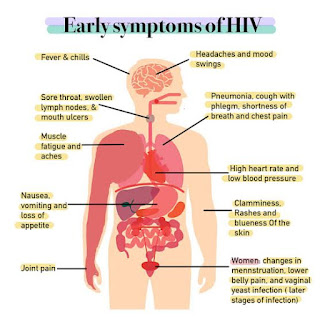WHAT YOU SHOULD KNOW ABOUT HIV/AIDS
What is HIV/AIDS?
HIV/AIDS is the acronym for the human immunodeficiency virus/acquired immunodeficiency syndrome. HIV is the virus that causes AIDS, which is incurable.
More than 1 million people in the United States currently are living with HIV/AIDS, and more than half a million people have died of AIDS since the U.S. epidemic began in 1981, according to the National Institute of Allergy and Infectious Diseases (Source: NIAID).
HIV/AIDS attacks the body’s immune system and is most often contracted through sexual contact. HIV/AIDS can also be passed to another person through contact with blood or body fluids, such as through blood transfusions, sharing needles contaminated with HIV, and during pregnancy and breastfeeding.
Currently there is no cure for HIV/AIDS, and it is eventually fatal. However, prompt diagnosis and treatment can reduce or delay the onset of some serious complications, such as opportunistic infections, and can improve quality of life. Prompt diagnosis can also minimize the spread of the disease to others. In some cases, rapid treatment with medication can prevent the development of HIV/AIDS after exposure to the HIV virus. This prophylactic treatment needs to begin within 72 hours after exposure to HIV/AIDS.
CAUSES OF HIV/AIDS
What causes HIV/AIDS?
HIV/AIDS is caused by infection with the human immunodeficiency virus (HIV). HIV/AIDS is most often contracted through sexual contact. Any person who engages in sexual activity, including vaginal, oral, or anal sex, can contract and pass on an HIV infection. This includes heterosexual, homosexual, and bisexual men and women. The more sexual partners a person has, the greater the risk of catching and passing on HIV/AIDS.
HIV/AIDS can also be passed to another person through other means, such as contact with blood or bodily fluids. This can occur during blood transfusions or by sharing needles contaminated with HIV. Contracting HIV/AIDs through transfusions of blood products has become very rare since 1985 because donated blood products are now tested for HIV.
HIV can also be passed from an infected mother to her baby during pregnancy, childbirth or breastfeeding.
What are the symptoms of HIV/AIDS?
The symptoms of HIV/AIDS infection result from the HIV attacking the cells of the body’s immune system. Early in the disease, many people with HIV infection have no symptoms. Some people may experience flu-like symptoms that occur about four to eight weeks after infection. Early symptoms of HIV/AIDS can include:
Fatigue
Headache
Recurring fever
Swollen glands
Weight loss
Yeast infections
Serious late-stage symptoms and complications of HIV/AIDS
Mild, early-stage symptoms of HIV/AIDS generally go away within several weeks after exposure to the virus. There may be no symptoms as many as 10 years or longer after HIV infection. Over this time, HIV gradually destroys the helper T cells of the immune system. This leads to a weakening of the body’s immune system, which can result in:
Certain cancers such as Kaposi’s sarcoma
Dehydration and electrolyte imbalance due to long-term diarrhea
Depression
Encephalitis
Hepatitis
Herpes
Neurological problems such as memory loss, confusion, and dementia
Pneumonia
Serious opportunistic infections such as tuberculosis, cytomegalovirus, meningitis, yeast infections, and toxoplasmosis
Shingles
Wasting syndrome
.....etc
How is HIV/AIDS treated?
Treatment of HIV starts with seeking regular medical care. This allows your health care professional to best evaluate your symptoms and risks and provide behavior counseling and regular testing for HIV infection as appropriate.
Regular medical care can increase your chances of catching and treating HIV in its earliest stages before serious complications occur. In some cases, rapid treatment with medication can prevent the development of HIV/AIDS after exposure to HIV. This prophylactic treatment needs to begin within 72 hours after exposure to HIV/AIDS.
HIV is not curable, but prompt diagnosis and treatment can help to reduce or delay the onset of serious complications, improve quality of life, and minimize the spread of the disease to others. You can best manage HIV/AIDS by consistently following your treatment plan.
For more information go to
mekefaruwa.blogspot.com










Comments
Post a Comment